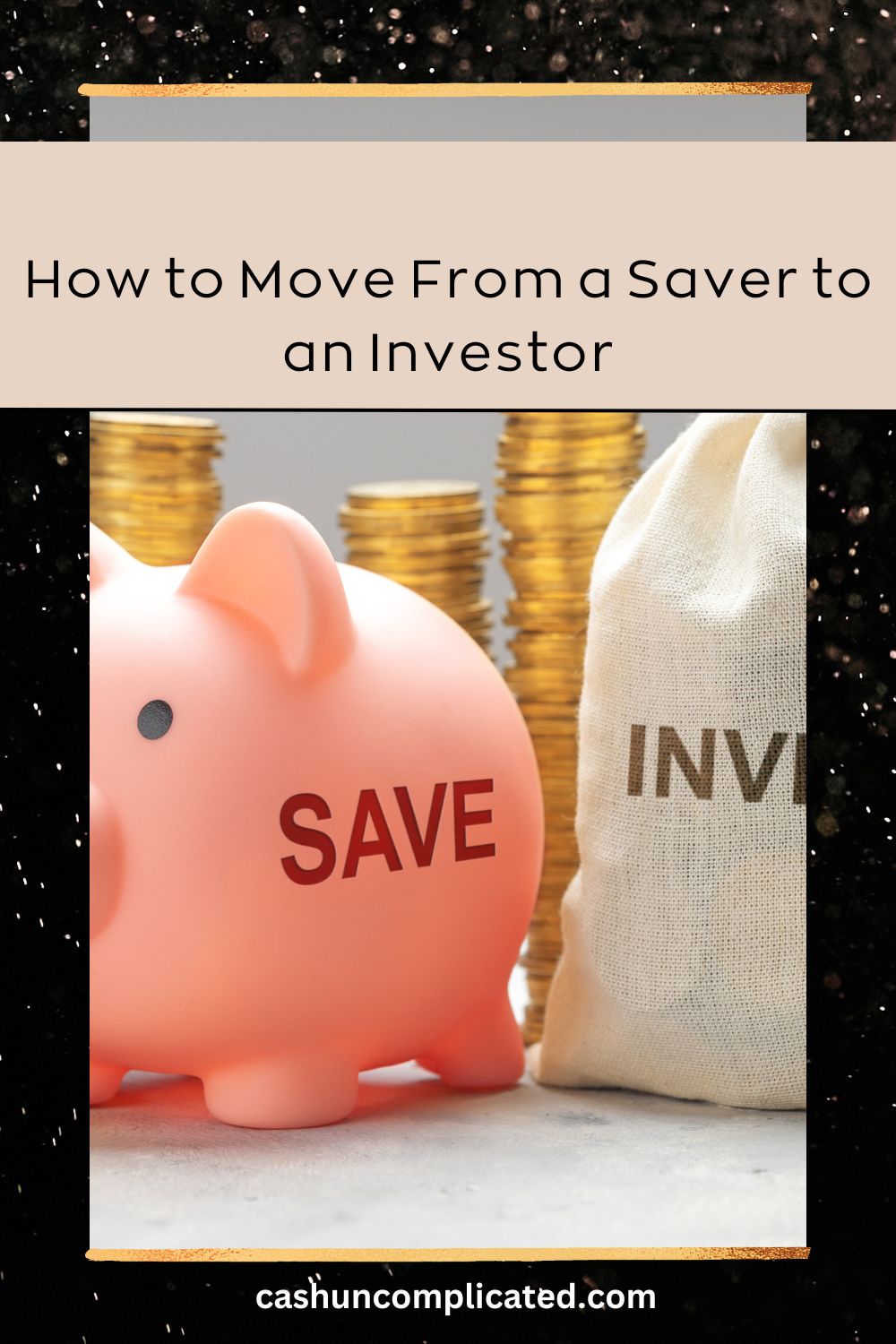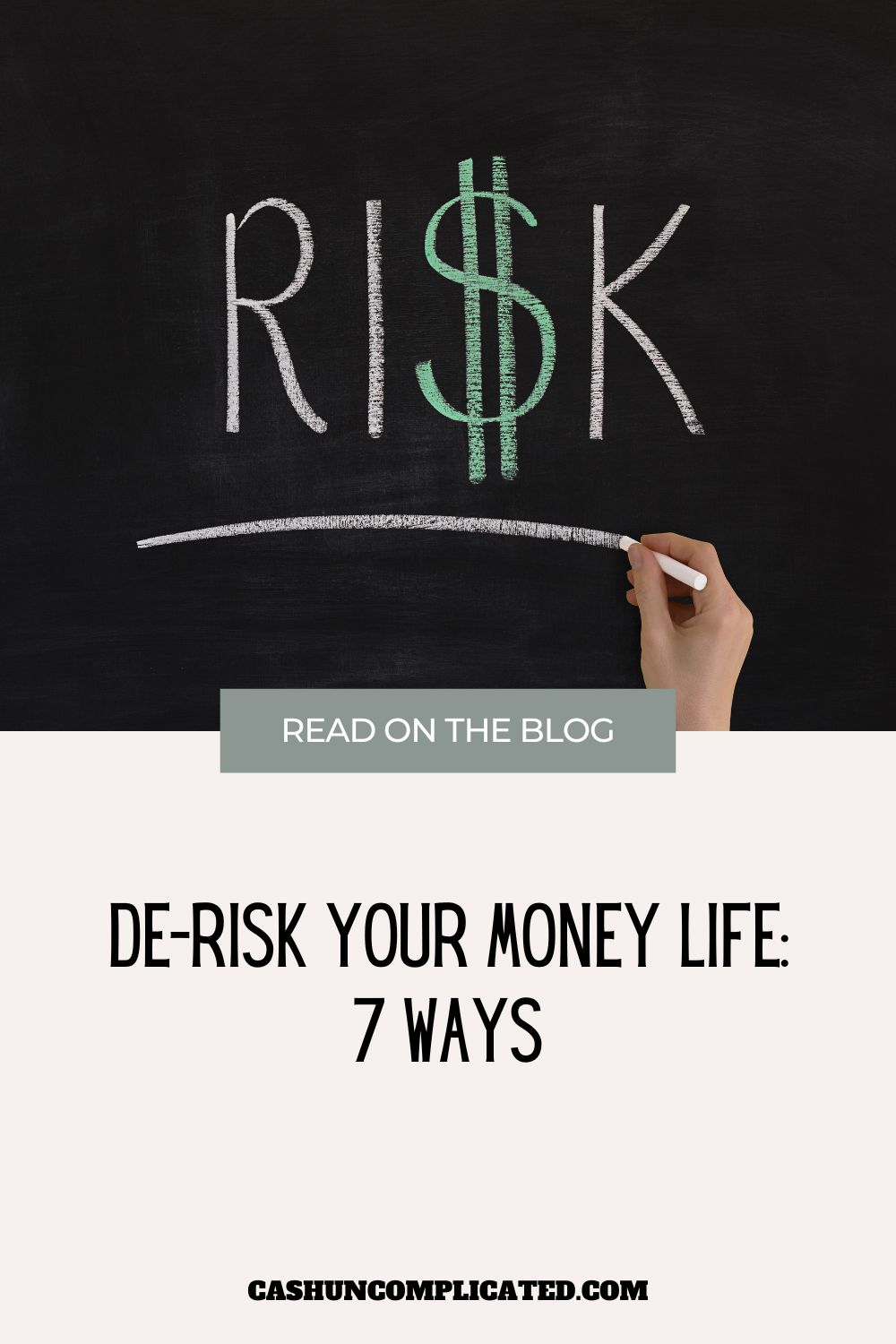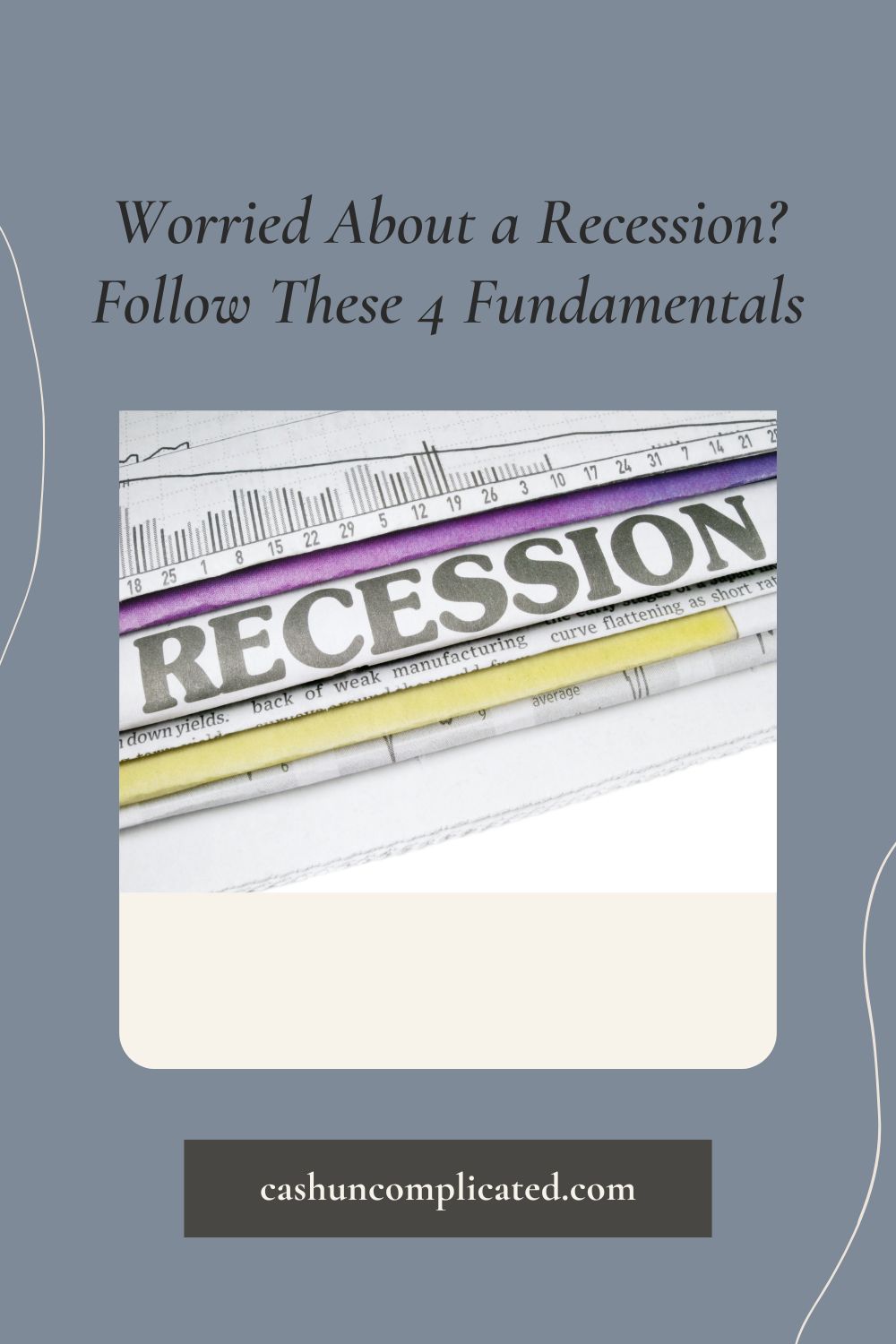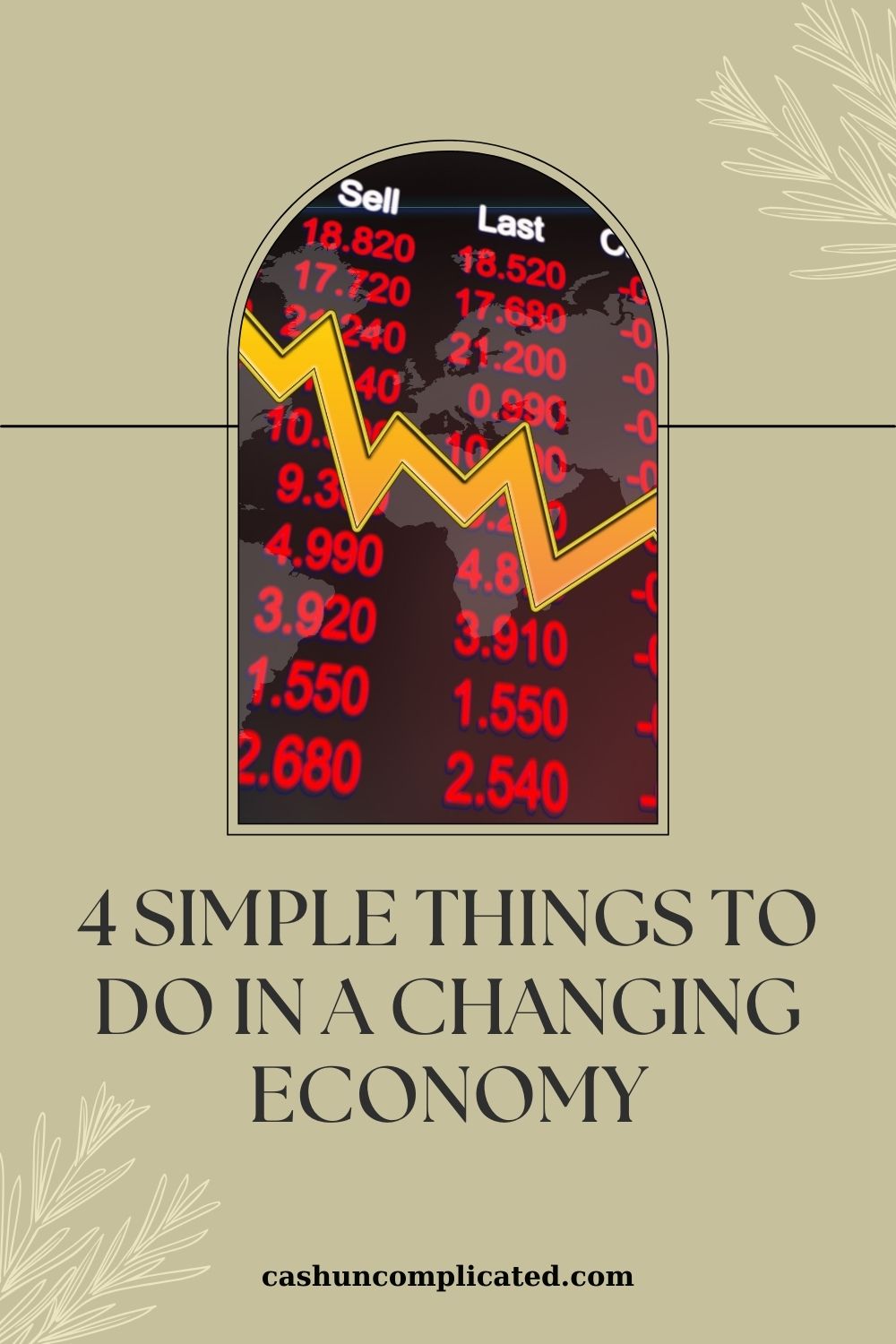Saving money is very important. I write all the time about the virtues of it. There’s a point though where you need to transition from just a saver to an investor, and I’m going to show you how to do it.
Saving Money
Saving money is an incredibly important part of personal finance. Most personal finance experts recommend saving enough in an emergency fund to cover three to six months of expenses, if not more. If you think of personal finance as a pyramid, saving money is at the base of it, a foundational piece.
Having money in the bank gives you a financial runway and a solid place to start from. If there’s an emergency like a job loss, major household repair, or any kind of unexpected expense, your savings will keep you afloat.
The Challenge of Just Saving
As essential as saving is, it can only take you so far. In order for you to accumulate life-changing wealth, you need to invest and use the power of compounding. It’s how true wealth is built. Look at these numbers to illustrate my point.
Someone who saves $1,000 per month in a checking account earning nothing would accumulate $240,000 after 20 years.
The investor who invests $1,000 per month earning ten percent would have $756,030 after 20 years.
Same amount, same consistency every month, it’s just that one person is investing while the other is not. The saver is losing money to inflation while the investor is beating inflation and making money on top of that. In this case, over $500,000.
This is why just saving is not a sustainable way to manage money.
Moving From Saver to an Investor
Here’s how to move from saver to investor. In fact, you’re actually not moving away from being a saver because it’s always wise to have some money saved up. The real transition is putting the bulk of your money into investments versus savings. Here’s how to do it.
Number 1: Pick an Investment
Pick an investment here. Don’t try and pick multiple things, just one for now. Keep things simple as you transition to becoming an investor. It could be real estate, index funds, ETF’s, etc.
Choose something to invest in and commit to that for a time period. Down the line you can always choose another investment as you gain new knowledge and information. For example, I once invested in an individual stock because I thought that was the way to go.
Well, I lost over 40 percent of that investment because I didn’t know what I was doing. Then I pulled all the money out and put it into a savings account because I thought investing in stocks didn’t work. Once I learned about index funds, I realized I could diversify into a massive pool of stocks and capture historical gains of around 10 percent.
Number 2: Choose How Much You Want to Invest
You don’t need to start investing 50 percent of your income right off the bat. That’s a high marker and most people can’t afford to do that in the beginning. Instead, choose how much you want to invest.
That could be 10-15 percent or higher. Even if you’re five percent or less, don’t feel bad–you have to start somewhere.
The important thing is to get into the game. You can only win if you’re in the game so if five percent is your ticket, then you’re in. You might be one of the worst players in the game, but you’re in and have lots of opportunity to improve.
Don’t spend too much time worrying about how much you’re going to invest, just pick an amount and adjust later as appropriate
Number 3: Pay Yourself First and Automate
This is a key point. Pay yourself first and automate. Pay yourself before all the other bills and expenses are due. This guarantees that you’ll be investing on a monthly basis because you’re prioritizing it before anything else.
To make this concept of paying yourself first even more powerful, automate your accounts to automatically withdraw a certain amount. That way you don’t need to think about it and you’re doing it without any additional effort. This is one of the most important financial habits anyone can implement.
Things start to get tough when you have to think and put too much effort into something. If you have to remember to invest every month you’re going to forget now and then, and eventually either stop or be inconsistent. Automation prevents all that from happening right from the start.
Number 4: Be Consistent
Keep investing through it all.
- Global uncertainty: keep investing
- Market correction: keep investing
- Bull market: keep investing
- Election year: keep investing
No matter what is happening on the outside, control what you can control and keep investing. Many people call this dollar-cost averaging, which is the act of investing the same amount month after month with adjustments as you earn more.
There’s a stat that if you miss the 10 most productive days of the stock market, your investment will return half of what it would have if you stayed invested. And if you miss the top 20 days, your returns would be cut by over 70 percent.
No matter what you invest in, staying in the game and being consistent is key.
Number 5: Add As You Go
Here are three ways to invest more that I write about in my book Cash Uncomplicated. I’ll summarize them here, but if you want more detail, check out the book.
They are:
- Reallocating money previously used to pay off debt
- Once you have a fully funded emergency fund, using the money previously used to contribute to savings to investing
- Earning more in your work or business
All three of these are tremendously powerful and will exponentially increase your wealth.
For example, if you had a car payment of $700 per month and paid the vehicle off, use that $700 to invest every month. Just like that you’re investing $700 more per month! As this money compounds, you will start to see big results.
Same thing goes for a fully funded emergency fund. If you used to contribute $1,000 to your emergency fund, use that same $1,000 and invest it. You’ll have the same quality of life as before, but the $1,000 is now going towards investing, which will supercharge your portfolio.
Number 6: Learn More and Invest More
There’s an expectation from brand new investors or people who haven’t started investing yet that they are supposed to know it all before starting. This is the wrong expectation.
There are very few things in life that happen overnight. Learning to catch a baseball takes time, learning to read is a multi-year process, and figuring out how to drive safely takes several years. There are countless other examples.
The key with investing is to just start and learn as you go. A lot of the learning comes from doing, as the information is more relevant to you once you get started. As you learn more, invest more. Then keep learning and expand your investments and contribute as much that works for your current life situation.
Conclusion
Moving from a saver to an investor can be scary. Saving is predictable–if you save $5,000 you’ll still have that $5,000 plus a little interest in a year. It feels safe and predictable. There’s just very little upside long-term and inflation will eat away at your money.
Saving is meant to provide a cushion for life’s unexpected occurrences, not to create long-term wealth. That’s what investing is for, provided you take advantage of it. To get this upside, everyone has to take the plunge and just start. Pretty soon, it will become your norm and it won’t feel so scary.
How did you make the leap from saver to investor?







